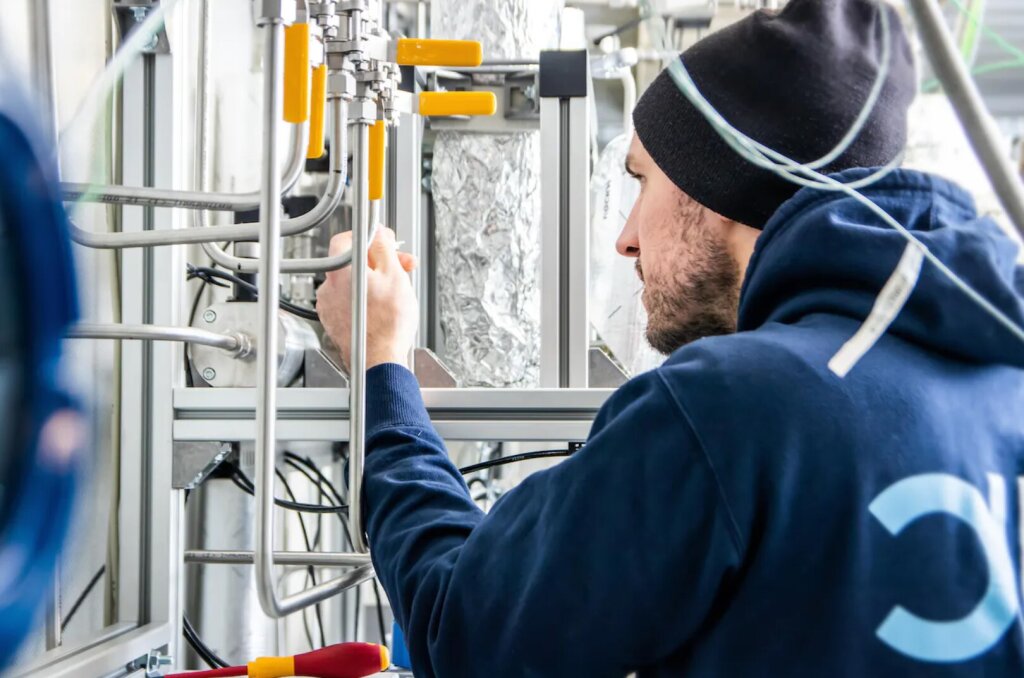Key take-aways:
Climeworks is supporting the NECOC research project at Karlsruhe Institute of Technology (KIT)
A unique container-scale facility is using direct air capture to produce carbon black
Carbon black is solid, less difficult to handle than CO₂ and can be used as a resource
Turning CO₂ into a high-tech resource: Carbon black
At Karlsruhe Institute of Technology (KIT), the NECOC research project is aimed at building a unique test facility for active reduction of atmospheric carbon dioxide (CO₂). The world’s first container-scale facility of this type is to convert CO₂ contained in ambient air into highly pure carbon black powder that can be used as a resource in industry. Project partners are INERATEC GmbH, a spinoff of KIT, and Climeworks. The research project, scheduled for a duration of three years, is funded with a total of EUR 1.5 million by the Federal Ministry for Economic Affairs and Energy (BMWi).
To achieve the climate goals of the Paris Agreement, global efforts to reduce greenhouse gas emissions will have to be complemented by solutions for removing already emitted CO₂ from the atmosphere. “Our project approach consists of removing CO₂ from the atmosphere and converting it into carbon black, i.e. highly pure carbon in powder form,” says Professor Thomas Wetzel of the Institute of Thermal Process Engineering (TVT). “In this way, a hazardous greenhouse gas will be converted into a raw material for high-tech applications. Carbon black can be used in electronics, printing, or construction.”
From direct air capture to carbon black
The test facility to be set up within the NECOC research project will combine the following process steps: By means of an adsorber, CO₂ is first captured from ambient air. Together with renewable hydrogen, it is then converted into methane and water in a microstructured reactor. The methane produced serves as a carbon carrier in the downstream process and is passed into a bubble reactor filled with liquid tin. In the ascending methane bubbles, a pyrolysis reaction takes place, by means of which methane is decomposed into its constituents. These are, on the one hand, hydrogen, that is directly fed back to methanation and, on the other hand, solid carbon in the form of microgranular powder, i.e. carbon black.
“Solid carbon is far less difficult to handle than CO₂ and can even be used as a resource. So far, carbon black has been produced mainly from fossil petroleum. That is why our process represents a technological approach for a sustainable future in several respects. It combines the direct contribution to solving the climate problem with a process for post-fossil resource supply”, says Dr. Benjamin Dietrich (TVT), project coordinator of NECOC.
Lead the race toward net zero
High-quality carbon removal for your climate strategy.
